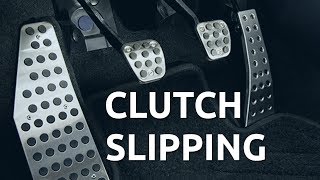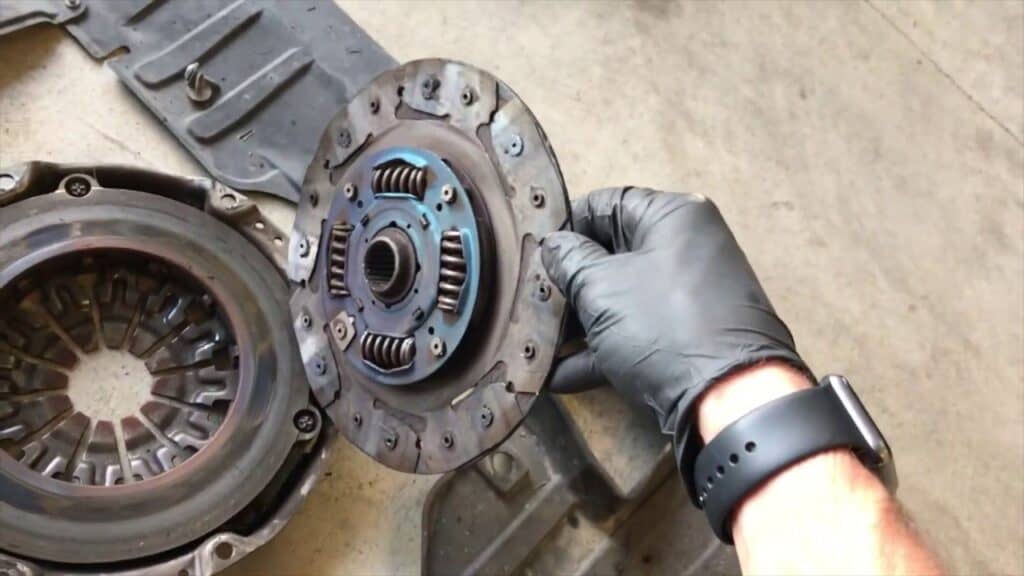Clutches are essential parts of vehicles and if they fail, you can be left stuck. Clutch usually connects many rotating shafts. Furthermore, they control the shaft movements by connecting the shafts moving to the engine and the shafts swaying and turning the vehicle wheels.
Cars usually have more than one clutch and they are helpful in machines that have two rotating shifts so that they can be combined and spin at the same rate, or they can be separated and revolve at a different pace. Clutch slipping means that your clutch is integrating and disintegrating continuously; hence power is not supplied to the wheels and the car starts to move slowly and eventually, it stops.
Signs of a clutch slipping include a pungent burning smell and at a time, you can see smoke. Clutch slipping can be caused by the breaking of clutch cables and pressure plates. Moreover, a clutch can also slip due to the oil covering the disk, extreme heat temperatures and damaged disks.
Symptoms of clutch slipping

You can quickly identify the clutch slipping symptoms even if you are not a mechanic. The clutch slipping can make your vehicle undergo serious problems. The symptoms include;
1. The clutch pedal is becoming more rigid than usual
The clutch pedal becoming stiffer makes your car have difficulties in moving fast. Your car will finally stop moving forward and you will be required to press the clutch pedal, then release it at the required time.
2. Your car is accelerating irregularly
When driving through a steep hill in high gear, the clutch disk loses friction for some seconds, causing the engine to start accelerating irregularly.
3. A pungent burning smell
After the clutch parts become scorch due to the sliding and stroking over each other, a pungent burning smell will be released. This will help you know that the clutch has started slipping.
4. Your engine is revving more than usual
Changing gears can make the engine start accelerating more than usual because the flywheel is not integrating the clutch disk properly.
5. The abrupt increase of engine power
A sudden increase in your car engine power can make your clutch start slipping if the clutch plate and the flywheel are not correctly connected.
6. The squeaking sound produced when driving
When you apply pressure while driving, some sounds may be produced and once you hear such kinds of sounds, it is a clear sign that your clutch is slipping.
How long a clutch lasts after starting slipping

Immediately your clutch starts slipping, it will continue getting poor every second and it will reach a point where it will stop working. The clutch usually lasts for around 60,000 to 80,000 miles; that is, it has not been slipping during its lifespan.
If your clutch has been slipping all its lifespan, the lasting may be halved and if you treat it well, it can last for longer miles. When you continue driving with a slipping clutch, it can cause severe damages to your gearbox and the clutch, which will deeply cost you during repairs.
You may need to replace the clutch at around 30,000 miles, even though other clutches can continue slipping up to 100,000 miles. Moreover, if you spend more time navigating on car ways, your clutch can last for a more extended period.
When you drive your car under a lot of pressure, the clutch is involved and the pressure plate will start bolting to the flywheel imposing more constant force on the friction plate using a diaphragm spring. The pressure is then passed on to the gearbox and the friction linings allow your drive to be smooth, engaging the clutch.
Once the clutch has been disconnected, clamping pressure is released instantly. After your clutches start wearing out, your car will start slipping slowly until the car no longer moves. You will need to perform some crucial things to make your clutch last longer.
For instance, don’t ride on the clutch that is not fully pressed or fully released; don’t start driving before connecting the gearbox and release the gear fully. In addition to that, make sure you service your car regularly because the maintenance will keep your gearbox working for a more extended period.
How to fix a slipping clutch

Once you experience a car slipping clutch, you can try to troubleshoot it to reach your destination. When fixing the slipping clutch, first identify the cause of the clutch. If a clutch is badly damaged, you will be required to replace it.
Therefore, it is essential to have car parts in your car in case of any emergencies. If you are unable to carry out the replacement, contact a mechanic or technician if possible.
Step 1: Unscrew the clutch
Open the clutch using a screwdriver and disintegrate it from the flywheel. Carry out a replacement for your clutch. Replacing a clutch is the most common way of fixing the slipping clutch.
Step 2: Carry out thorough checking of your flywheel
Check the flywheel to see if it needs any replacements or resurfacing. If you notice that your flywheel has come in contact with oil or grease, heat production and even the flywheel has worn out more, replacement is the only way to stop the clutch from slipping.
Step 3: Check on the pilot bushing
Replacing your pilot bushing can stop clutch slipping, especially when you are out of miles range and need to reach your destination.
Step 4: Check if the car components are tightened correctly
Oil leakages to the car parts can make the car parts such as the gearbox loosen. The loosening of some car parts causes the clutch to disintegrate and start slipping, slowing down the speed of car movement and eventually, the parts fully disconnect, making the car stop.
Conclusion
Clutch slipping is a common problem that is caused by many reasons. This article has helped you understand what clutch slipping means and the symptoms of clutch slipping. Luckily enough, after reading this, you now understand how long the clutch slipping will last and how long it will take you to reach your destination.
If your clutch fails, you can now troubleshoot it by following the steps above and if not possible; you will have to contact the mechanic.
